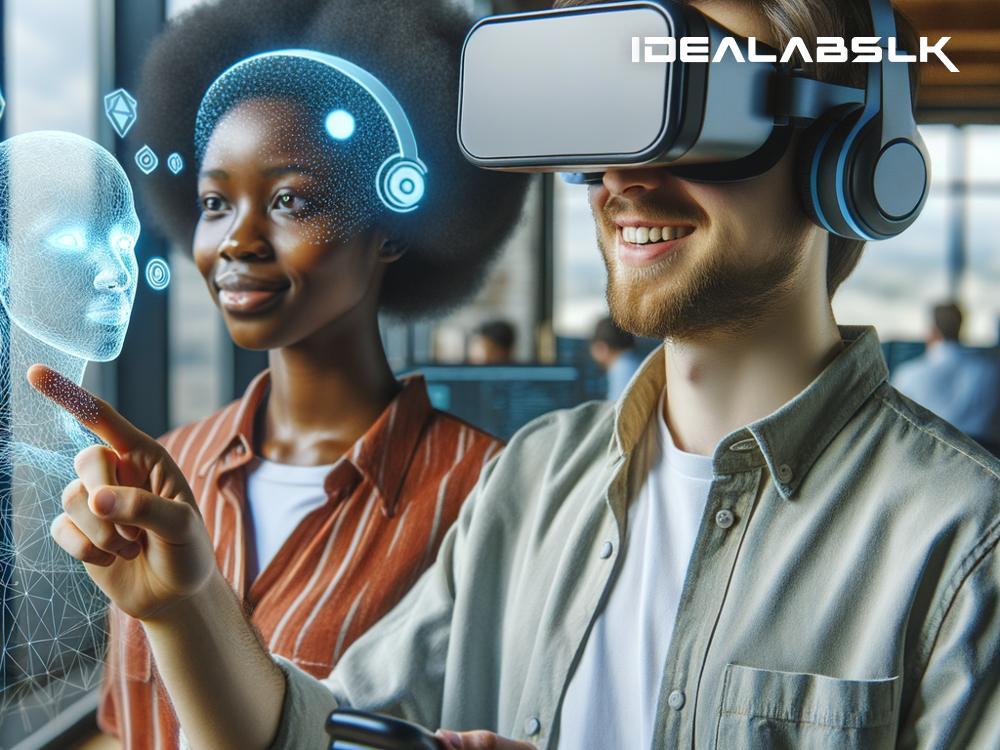AI in Virtual Reality: How Machine Learning Will Enhance Immersion and Interaction in 2024
In recent years, the world of virtual reality (VR) has undergone incredible transformations. With headsets getting sleeker and content becoming more engaging, VR experiences are more immersive than ever. However, it's the integration of Artificial Intelligence (AI), specifically machine learning (ML), that's set to redefine the boundaries of immersion and interaction in VR in 2024. Let's dive into how AI is poised to revolutionize the VR landscape in simple terms.
Understanding AI and VR
First, let's break down what we mean by AI and VR. Virtual Reality is a computer-generated simulation of an environment that you can interact with in a seemingly real way using special electronic equipment, like headsets with screens or gloves fitted with sensors. Artificial Intelligence, on the other hand, is the ability of a computer or a computer-controlled robot to perform tasks commonly associated with intelligent beings. Machine learning is a subset of AI that involves algorithms learning from and making predictions or decisions based on data.
Tailored Experiences
One of the groundbreaking ways machine learning is improving VR is by creating highly tailored and personalized experiences. Through analyzing your previous interactions, choices, and even emotional reactions in the virtual environment, AI can adjust the content in real-time. It means that in 2024, two people might go through the same VR program and come out having experienced something uniquely different, better suiting their interests and emotional triggers.
Improved Natural Interaction
In the current VR setups, interaction is relatively basic. You might use hand controllers or gestures to manipulate objects or move around. However, AI is set to change that by enhancing interaction to unbelievably natural levels. Through machine learning algorithms, VR systems can learn to understand and interpret the user's gestures, facial expressions, and even vocal intonations more accurately. This implies not just more fluid and natural manipulation of the virtual environment but also NPCs (Non-Player Characters) that react in much more human-like ways, making conversations and interactions within the VR world incredibly realistic.
Enhanced Learning and Training
VR has shown significant promise in fields like education and professional training, offering safe and controlled environments for learning and practice. AI, through machine learning, is about to turbo-charge this potential. By adapting to the learner's speed and style, it can offer personalized learning paths, ensuring more efficient and thorough understanding. Whether it's a medical student performing virtual surgeries or a mechanic practicing on virtual engines, AI's adaptive learning systems will ensure they are challenged appropriately, making the learning process much more effective.
Smarter Virtual Worlds
Imagine stepping into a VR game or simulation that evolves. Machine learning algorithms can analyze how users interact with the environment and each other, then use that data to evolve the game itself. This could mean landscapes that change with the seasons, based on real-world data, or game levels that adapt to ensure they offer the right level of challenge to keep you engaged but not frustrated. It's a step towards truly dynamic virtual worlds that grow and change, offering endless fresh experiences to users.
Overcoming Motion Sickness
A hurdle that VR has struggled with is motion sickness, a common side-effect for many users. Here, too, AI through machine learning offers a beacon of hope. By analyzing user responses and feedback, AI can identify patterns and triggers that cause discomfort. This insight can guide the design of future VR experiences, making them more comfortable and reducing the occurrence of motion sickness, thereby extending the duration users can comfortably spend in VR.
Conclusion
The promise of AI, through the power of machine learning, to enhance immersion and interaction in VR is boundless. As we look towards 2024, these advancements spell a future where VR experiences are not only more engaging and realistic but also smarter and individually tailored. The integration of AI in VR is set to create experiences that are genuinely transformative, transcending the realms of entertainment, education, and professional training. As machine learning continues to evolve, the question is no longer if AI will redefine what's possible in VR, but just how far-reaching these changes will be. As we step into this exciting future, one thing is clear: the virtual worlds of tomorrow will be far more immersive and interactive than we ever imagined.

